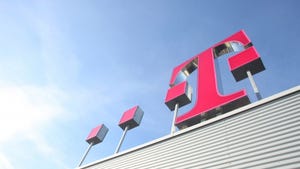NSN lets resources flow with Liquid Radio
Innovative network optimisation initiatives continue to flow from the vendor community, with Nokia Siemens Networks this week introducing the next part of the heterogeneous network puzzle a baseband pooling technology, which will help network capacity and coverage to ‘flow’ to where it’s needed.
March 24, 2011

Innovative network optimisation initiatives continue to flow from the vendor community, with Nokia Siemens Networks this week introducing the next part of the heterogeneous network puzzle a baseband pooling technology, which will help network capacity and coverage to ‘flow’ to where it’s needed.
Liquid Radio claims the ability to respond to the fluid demands of today’s networks with a technique known as baseband pooling, which centralises the resources needed to undertake processing functions common to every base station in a given area. The result is a more cost efficient sharing of resources over a large geographical area.
NSN’s Flexi Multiradio Antenna System has been unveiled as a key part of the Liquid Radio architecture and combines antenna and radio in one functional enclosure, with dedicated power amplifiers for each antenna element. The active antenna allows beamforming, which allows capacity to be directed exactly where the user requires it, delivering up to 65 per cent capacity gain, NSN said. Coupled with Self Organizing Networks (SON) capability, the approach reduces management complexity and allows connectivity for different layers of the network in one unified network and user experience.
“Liquids are unconstrained, streaming to fill any gap or space,” said Thorsten Robrecht, head of network systems product management at NSN. “In the same way, our Liquid Radio architecture removes the constraints of traditional mobile broadband networks to address the ‘ebb and flow’ of traffic created by users’ movements across the network,” said Robrecht.
“We foresee demand for network capacity increasing to up to 1GB per user per day. Not only will this require substantial network investments, but also a unique combination of base station sites for wide area coverage complemented by wifi and small, compact micro, pico and femto cells.”
The company expects to begin deployments of this architecture sometime during 2011.
About the Author(s)
You May Also Like








.png?width=300&auto=webp&quality=80&disable=upscale)


_1.jpg?width=300&auto=webp&quality=80&disable=upscale)


.png?width=800&auto=webp&quality=80&disable=upscale)